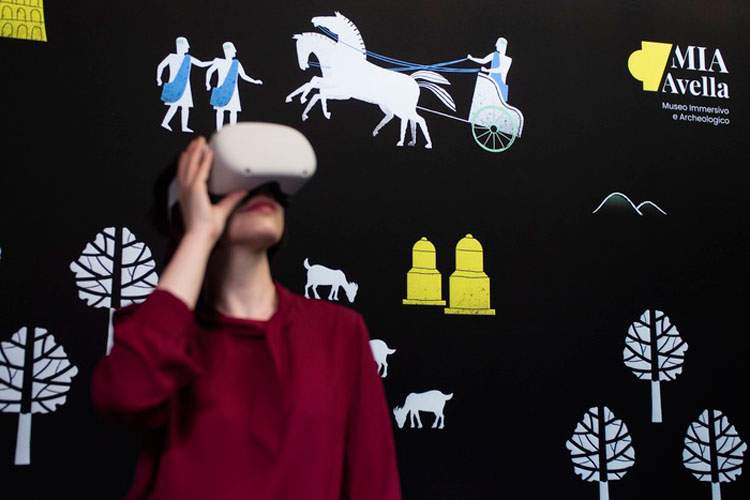A new archaeological and immersive museum to discover the history of Avella
A new museum venue has been inaugurated in Avella, in the province of Avellino, at the Palazzo Baronale: it is the MIA - Museo Immersivo Archeologico, set up by ETT, which aims to enhance the cultural, artistic and landscape heritage of the province. The new museum is part of the Sistema Irpinia digital platform. The latter promotes the territory through the systemization of the 118 municipalities of the province, in order to strengthen the socio-economic, historical-artistic and heritage identity of territoria avellinesi.
The museum itinerary is spread over nine rooms in addition to an educational room, capable of offering 360-degree immersive experiences in Avella’s history thanks to ETT’s new technologies. From the Copper and Bronze Ages to Greek colonization, Roman times and modern times through the Middle Ages, the museum unfolds along a multimedia path characterized by projections, graphic suggestions, talking pictures and virtual reality stations to tell the story of the city. Thanks to immersive techniques and in-depth knowledge of the area’s history, it was possible to give the public the chance to identify with events and protagonists from different eras, themed in each of the nine rooms.
Starting with the topographical evolution of the city from prehistory to contemporaneity and the history of Avella by macro-epochs, the origins and early settlements are themed; with videomapping, the Roman Abella is prototyped by a wall featuring the Decumano Maior graphic and other narratives.
Room 3 illustrates the medieval period of Avella focusing on the story of St. Michael the Archangel and the cave of St. Michael; this is followed by a narrative of the fifteenth-century events of the De Avella family and the legend of the Persian prince Cofrao and Bersiglia. The period from the sixteenth to the nineteenth century is narrated in Room 5 with the voices of the protagonists who took turns in the Baronial Palace: Girolamo Colonna, Pietro Antonio Spinelli, Ottavio Cataneo, Carlo Doria and Livia Colonna.
The narrative continues in Room 6 with the nineteenth century narrated by actors in greenscreen, a photographic/cinematographic technique used to superimpose two different images or videos, displayed by monitors. Starting in this room, Avellino’s history intersects with Italian and European history, involving the nobles of the area.
From the next room, technology intervenes to give support to the visitor: virtual reality, computer graphics and 360° VR drone footage restore four particularly significant historical moments, such as the Necropolis of Avella with a CG reconstruction of a Roman funeral rite, the clash of gladiators inside theamphitheater of Avella, the life of the Castle of Avella with a lunge into the life and condition of women in ancient times, and, finally, the drone flight, which brings us back to the Avella of today, the Avella not only historical but also touristic, captured thanks to 360-degree aerial shots.
Special attention has been paid to Generation Z, to whom the educational room is dedicated with three learning and gaming stations: through Near Field Communication, young people can relate to the figure of the archaeologist and be involved in gamification activities. At the same time, Irpinian folklore, food and fashion can be known with the use of a touchscreen desk, while the sites of castles reproduced on screens tell the vicissitudes of the characters housed within them.
 |
| A new archaeological and immersive museum to discover the history of Avella |
Warning: the translation into English of the original Italian article was created using automatic tools. We undertake to review all articles, but we do not guarantee the total absence of inaccuracies in the translation due to the program. You can find the original by clicking on the ITA button. If you find any mistake,please contact us.





























